WORKac and Ant Farm design a utopian floating city for humans and marine animals
Chicago Architecture Biennial 2015: WORKac has teamed up with the founders of 1970s art collective Ant Farm to design a floating city based on drawings that were lost during a fire decades ago (+ slideshow).

Using a handful of salvaged drawings as reference, the New York firm worked with the collective to fill in the gaps in their archive. They then used these new drawings as the starting point for another concept described as a "vehicle of dreams".
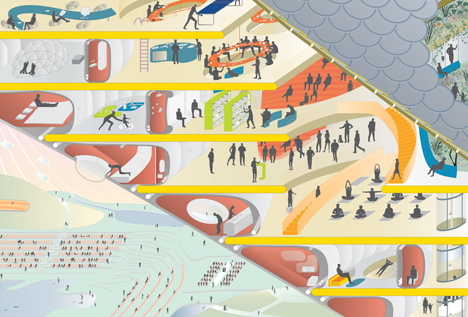
Called 3-C.CITY: Climate, Convention, and Cruise, the installation is on view at the Chicago Architecture Biennial, which opened 3 October and continues to 3 January 2016.
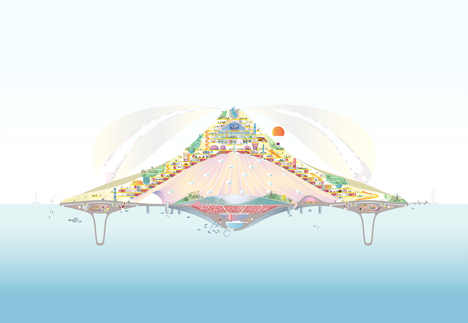
Ant Farm was an avant-garde art and architecture collective started in 1968 by Chip Lord and the late Doug Michels. The San Francisco studio designed conceptual projects and staged performances, with the aim to provoke cultural introspection rather than address commercial viability.
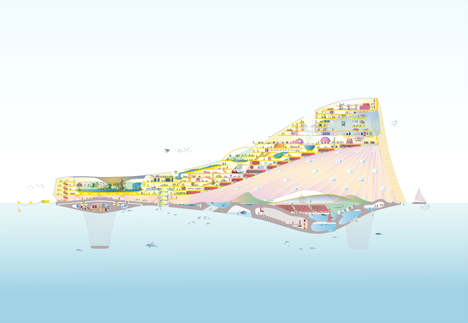
Ant Farm was well known for its Inflatables – low-cost, portable shelters that the studio used to host events – along with Cadillac Ranch, a public installation in Texas featuring a series of Cadillac cars half-buried in sand. But the group disbanded in 1978 when its studio and archive burned down.
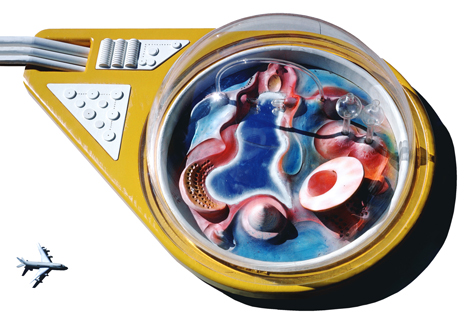
WORKac started talking to Lord earlier this year about collaborating for the Biennial.
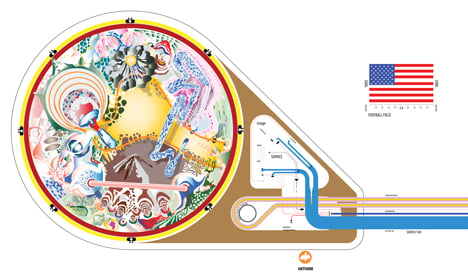
"We really like Ant Farm," said Dan Wood, a founding partner at WORKac. "I taught studio with Chip Lord a few times, and in the back of our minds, we always had the idea to try and do something together."
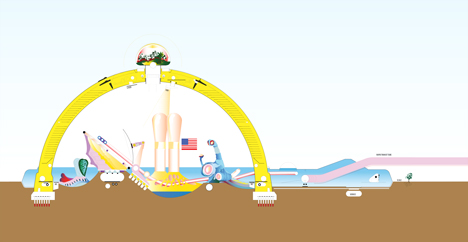
"We started with this big conversation, where we sat around and just talked about the history of Ant Farm: what happened, how they were able to get involved in so many different things, and who their influences were, which was really interesting," Wood told Dezeen.
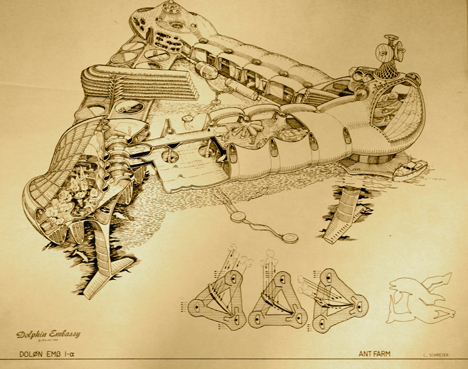
That dialogue led to the idea of revisiting three of Ant Farm's projects: House of the Century, Convention City and Dolphin Embassy. The material for those schemes had been destroyed during the fire.
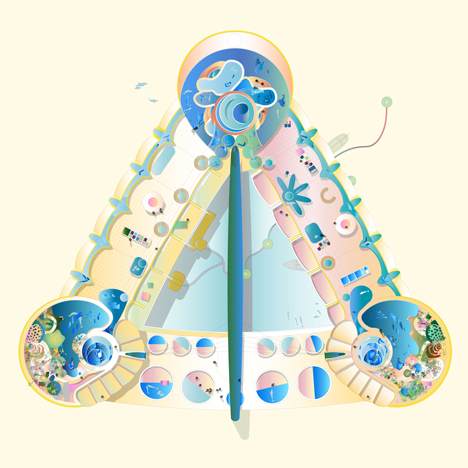
The designers sent sketches back and forth between New York and San Francisco, ultimately deciding to create a "floating city" that combined elements from all three projects.
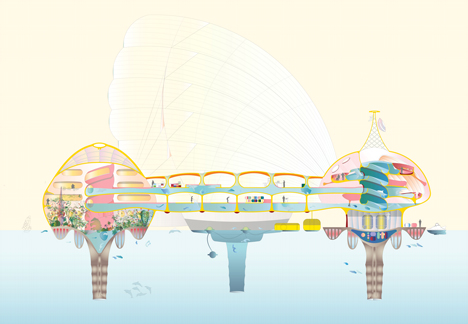
3-C.CITY, as the final scheme is called, belongs to no country and is intended to "facilitate dialogue and debate between people and other species". It serves as a vessel, a research lab, a conference centre and a "vehicle of dreams".
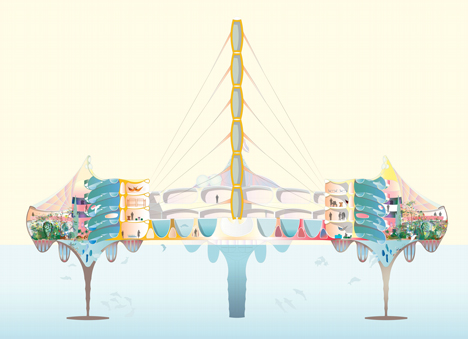
"Ant Farm had this famous Truckstop Network, which was about America connected by highways," explained Wood. "This kind of blows that up to the global scale."
Related stories: see more from the Chicago Architecture Biennial 2015
"The idea is that it's a floating city not bound by any national borders. People can come together to live in a different way and discuss important issues of the day."
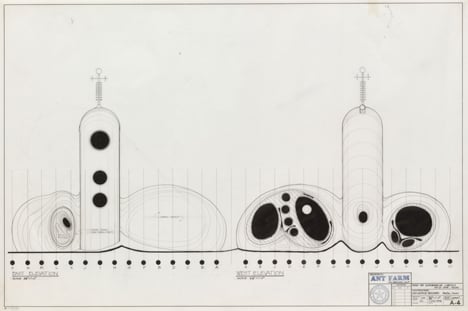
The perimeter of the island features a horizontal layer of inflatable spaces that serve as housing. Large, vertical cuts through floor plates encourage collective activity, such as group dining.
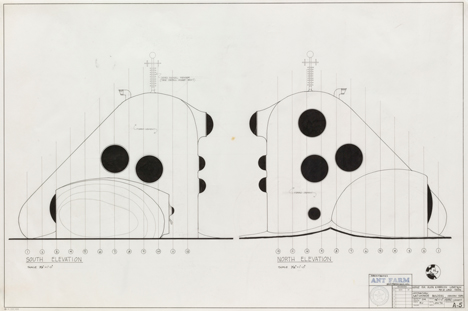
The inner portion of the city contains the community spaces – an "interior landscape of participation that includes not only people but also dolphins and whales that can participate in the discussion."
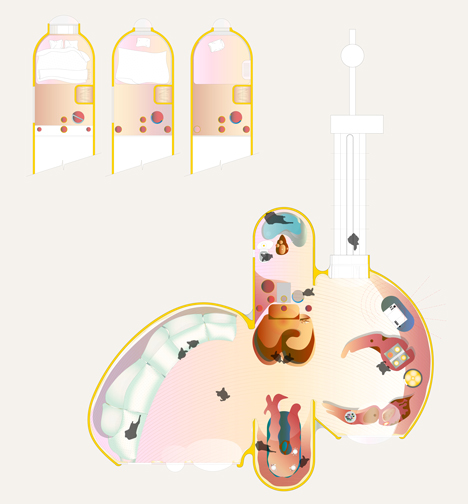
The installation at the biennial features drawings, videos, and a model of the floating city.
"They really pushed us to be more radical than we normally would be," said Wood of working with Ant Farm.
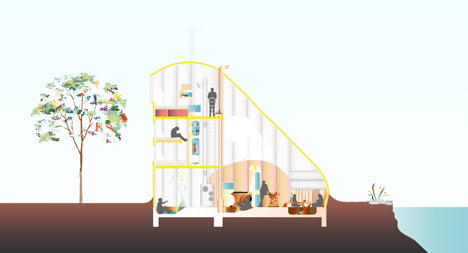
"The idea of a counterculture is still really important," he added. "It's not just counter America – it is global. We have global concerns now and there could be potentially a global counter movement."
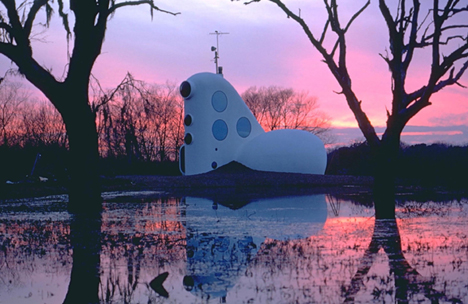
Other projects on view at the biennial include an art park in Bali by Aranda\Lasch and a prototype for sustainable housing in Mexico City by Tatiana Bilbao.
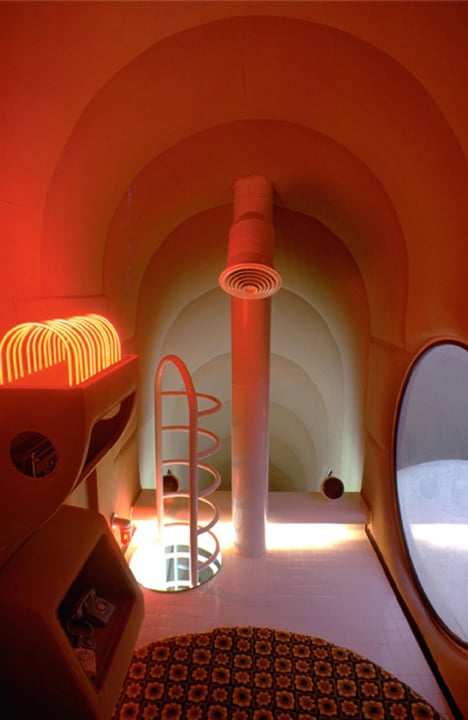
Described by curators Sarah Herda and Joseph Grima as a "site of experimentation," the Biennial also features a series of 18 ideas for Chicago's future.
Model photography by Bruce Damonte.
Project credits:
Ant Farm: Chip Lord and Curtis Schreier
WORKac team: Amale Andraos, Dan Wood, Tom Goddeeris, Chije Kang, Laetitia Fontenat, Margaux Guillot, Trevor Hollyn Taub, Jun Deng and Madeeha Merchant